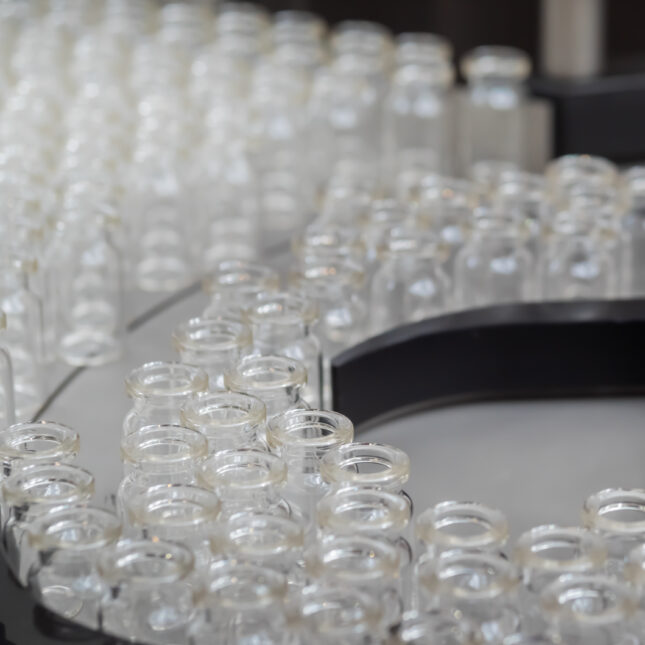
Off-patent medicines provide people with access to high-quality essential treatment options that can be significantly less expensive than branded on-patent medicines. Off-patent therapies — generics and biosimilars — represent a system-critical industry that delivers around 80% of medicines used worldwide at a fraction of the cost of branded medicines.
A growing area of focus is on the development of complex generics. These include products with complex active ingredients and complex drug-device combinations, among others. Complex generics are typically difficult to develop, regulatory pathways for them can be convoluted, and the regulatory frameworks differ across health authorities, including the U.S. Food and Drug Administration (FDA) and the European Medicines Agency (EMA).
This lack of alignment can slow development, making accessing these medicines more complicated than it should be. There is an opportunity to fix this by encouraging regulators such as the FDA and the EMA to agree on an aligned regulatory approach to the development of complex generics.
A step in the right direction for complex generics
In 2021, the FDA and EMA launched a parallel scientific advice pilot program for complex generic/hybrid drug products. This program aims to provide a mechanism for the FDA and EMA to jointly consider, and exchange views with applicants, on scientific questions during the development phase of hybrid/complex generic products.
Under the program, applicants can request joint agency meetings to address specific scientific questions and work toward product approval in both regions simultaneously. These meetings are designed to give applicants a clearer understanding of the reasoning behind any regulatory decisions — including any divergence of opinion — and optimize product development by avoiding unnecessary testing replication or diverse testing methodologies.
In theory, the program should lead to some harmonization of the regulatory requirements across the two agencies that would, in turn, result in fewer clinical trials, reduced development costs, and faster time to market. So, why have only two companies embraced the FDA-EMA parallel scientific advice pilot program to date? A few inherent practical limitations in how generics are registered and developed across the two regions are to blame.
Hurdles that limit uptake of the program
The U.S. and Europe have significant differences in exclusivity and submission timelines. In the U.S., a generic developer can submit a new drug product application as early as four years after the reference listed drug gains approval. In Europe, certain initial generic applications can only be made eight years after approval.
Differences in how each region approaches the review of generic drug product applications can also be problematic. The EMA takes a more tailored approach, with more emphasis being placed on the specific requirements of each application. This differs from the FDA’s more prescriptive approach, where guidance is generally provided based on the reference product and less so at the level of the individual application.
Another major contributor to the low levels of program adoption to date is that each regulatory authority requires reference products sourced from its own region to be used in bioequivalence studies: the FDA accepts only U.S.-approved reference products, and the EMA accepts only EU-approved reference products, even though many reference listed drugs marketed in the U.S. and Europe are the same product.
These differences, among other regulatory practices, can translate into divergent data requirements and study designs, and the need to perform duplicate bioequivalence studies in each region. This can be costly, inefficient and, in my opinion, unnecessary.
The need for an aligned approach to regulatory and scientific requirements
These practical challenges are currently limiting developers’ opportunities to effectively engage with the parallel scientific advice pilot program, and many are choosing not to participate in it. To set up the parallel scientific advice pilot program for future success, the FDA and EMA need to collaborate to harmonize requirements.
Complex generics would especially benefit from a single development program that meets the requirements of both regulatory agencies. While there may be some concerns from the generics industry that future iterations of the program will result in more stringent data requirements across both regions, it is important to see this as an opportunity for optimization and alignment.
I believe that regulators can incentivize applicants to use the parallel scientific advice pilot program by agreeing on the use of single bioequivalence studies covering both regions, with streamlined scientific requirements, using reference products licensed within or outside of the filing region. Ultimately, a more accessible program will stimulate the development of more complex generic drug products, leading to multiple in-market treatment options and healthy competition, with downward pressure on costs and ultimately greater access to complex generics and more sustainable health care systems.
While there is still work to be done, the FDA-EMA parallel scientific advice pilot program is an important step in the right direction. I’ve been working on complex generics for more than a decade, and have seen firsthand the significant progress that can be made through industry-regulator collaboration and cross-regulator collaboration through my previous work with the International Generic Drug Regulators Pilot and the Generic Medicines Working Group Initiative. Another great example is the FDA and EMA mutual recognition agreement for good manufacturing practice inspections, which has been in place for many years, and allows these agencies to rely on each other’s inspection systems and share information.
I remain confident that the FDA and EMA will continue to listen to industry feedback and align as needed to optimize the parallel scientific advice pilot program. Doing that will improve uptake. With a degree of flexibility from the two agencies, the program will be well-positioned to deliver on its potential to streamline the regulatory process for complex generics without any compromise to these essential products’ safety and effectiveness.
Michael Banks is the global head of regulatory affairs for Sandoz.





